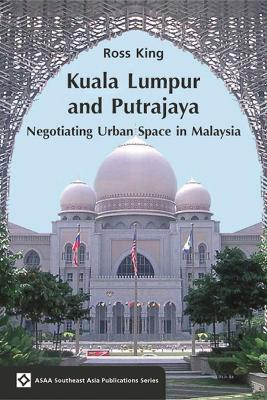ASAA Southeast Asia Publications
1 total work
Arguably Southeast Asia's most spectacular city, Kuala Lumpur - widely known as KL - has just celebrated 50 years as the national capital of Malaysia. But KL now has a very different twin in Putrajaya, the country's new administrative capital. Where KL is a diverse, cosmopolitan, multi-racial metropolis, Putrajaya fulfils an elitist vision of a Malay-Muslim utopia. KL's multicultural richness is reflected in the brilliance and diversity of its architecture and urban spaces; Putrajaya, by contrast, is an architectural homage to an imagined Middle East.
The 'purity' of Putrajaya throws the cosmopolitan diversity of Kuala Lumpur into sharp relief, and the tension between the two places reflects the rifts that run through Malaysian society. The author considers what form of metropolis the Kuala Lumpur-Putrajaya region might foreshadow, arguing that signs of this future city are to be sought in the collision points between the utopian dreams of imagined futures and the reality of purposely forgotten pasts.
The book includes copious illustrations of the wider Kuala Lumpur metropolitan region. It is directly applicable to studies in architecture, urban planning, urban design, and Malaysian politics and society. It also has relevance to the fields of postcolonial studies, media studies and critical social theory.
The 'purity' of Putrajaya throws the cosmopolitan diversity of Kuala Lumpur into sharp relief, and the tension between the two places reflects the rifts that run through Malaysian society. The author considers what form of metropolis the Kuala Lumpur-Putrajaya region might foreshadow, arguing that signs of this future city are to be sought in the collision points between the utopian dreams of imagined futures and the reality of purposely forgotten pasts.
The book includes copious illustrations of the wider Kuala Lumpur metropolitan region. It is directly applicable to studies in architecture, urban planning, urban design, and Malaysian politics and society. It also has relevance to the fields of postcolonial studies, media studies and critical social theory.
